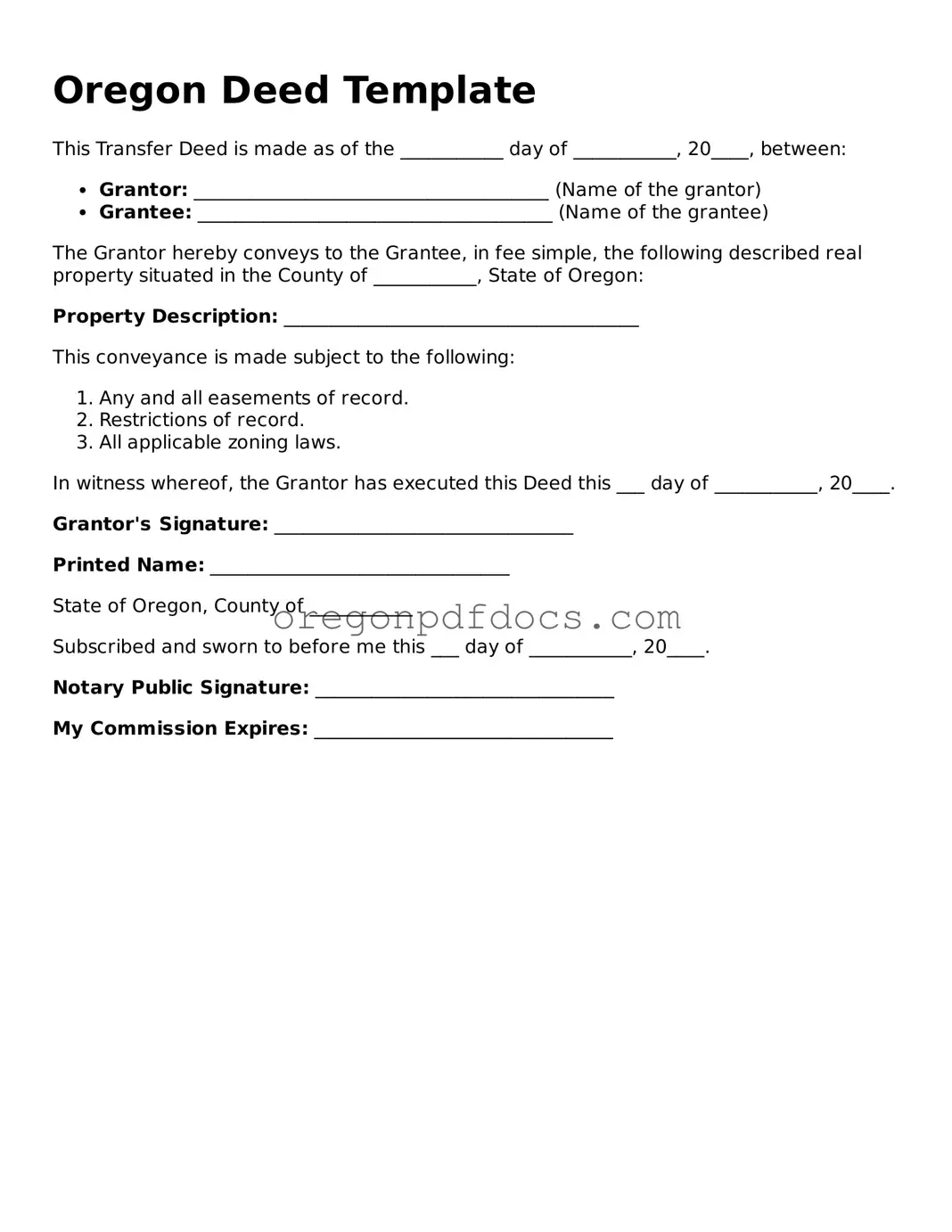Oregon Deed Template
This Transfer Deed is made as of the ___________ day of ___________, 20____, between:
- Grantor: ______________________________________ (Name of the grantor)
- Grantee: ______________________________________ (Name of the grantee)
The Grantor hereby conveys to the Grantee, in fee simple, the following described real property situated in the County of ___________, State of Oregon:
Property Description: ______________________________________
This conveyance is made subject to the following:
- Any and all easements of record.
- Restrictions of record.
- All applicable zoning laws.
In witness whereof, the Grantor has executed this Deed this ___ day of ___________, 20____.
Grantor's Signature: ________________________________
Printed Name: ________________________________
State of Oregon, County of ___________
Subscribed and sworn to before me this ___ day of ___________, 20____.
Notary Public Signature: ________________________________
My Commission Expires: ________________________________
